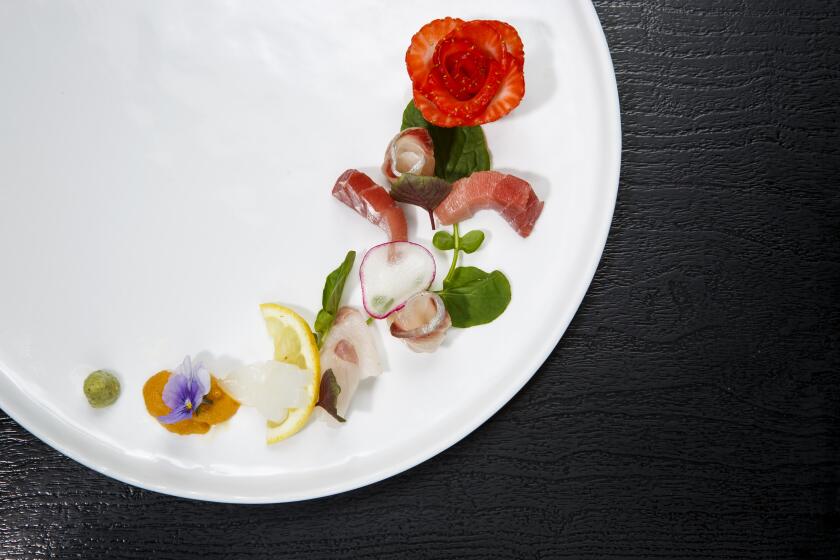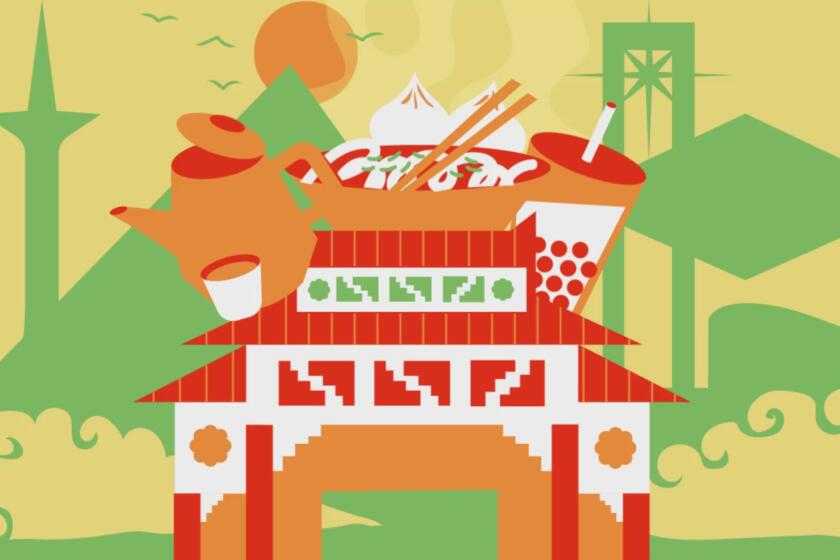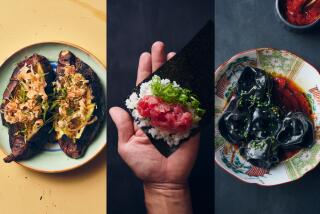
If you order the warm tofu at n/soto, it will arrive first. The moment of ceremony feels settling.
“Oboro” translates from Japanese as “clouded” or “hazy,” sometimes in reference to the view of the moon. The allusion clicks when you peer down at a bowl of just-made oboro tofu at n/soto. Round, silvery, softly cratered and shadowy: Its surface has unmistakable lunar traits.
Some quick chemistry precipitates the poetry.
A few drops of nigari, a liquid byproduct of salt processing that contains magnesium chloride and other trace elements, coagulate locally made Meiji soy milk into custardy bundles of tofu. No warm batch is quite the same as the next — some arrive set to the edges of the small ceramic pot, some more pleasantly milky — but the dish’s effect always soothes, and its flavor is consistently nutty-earthy.

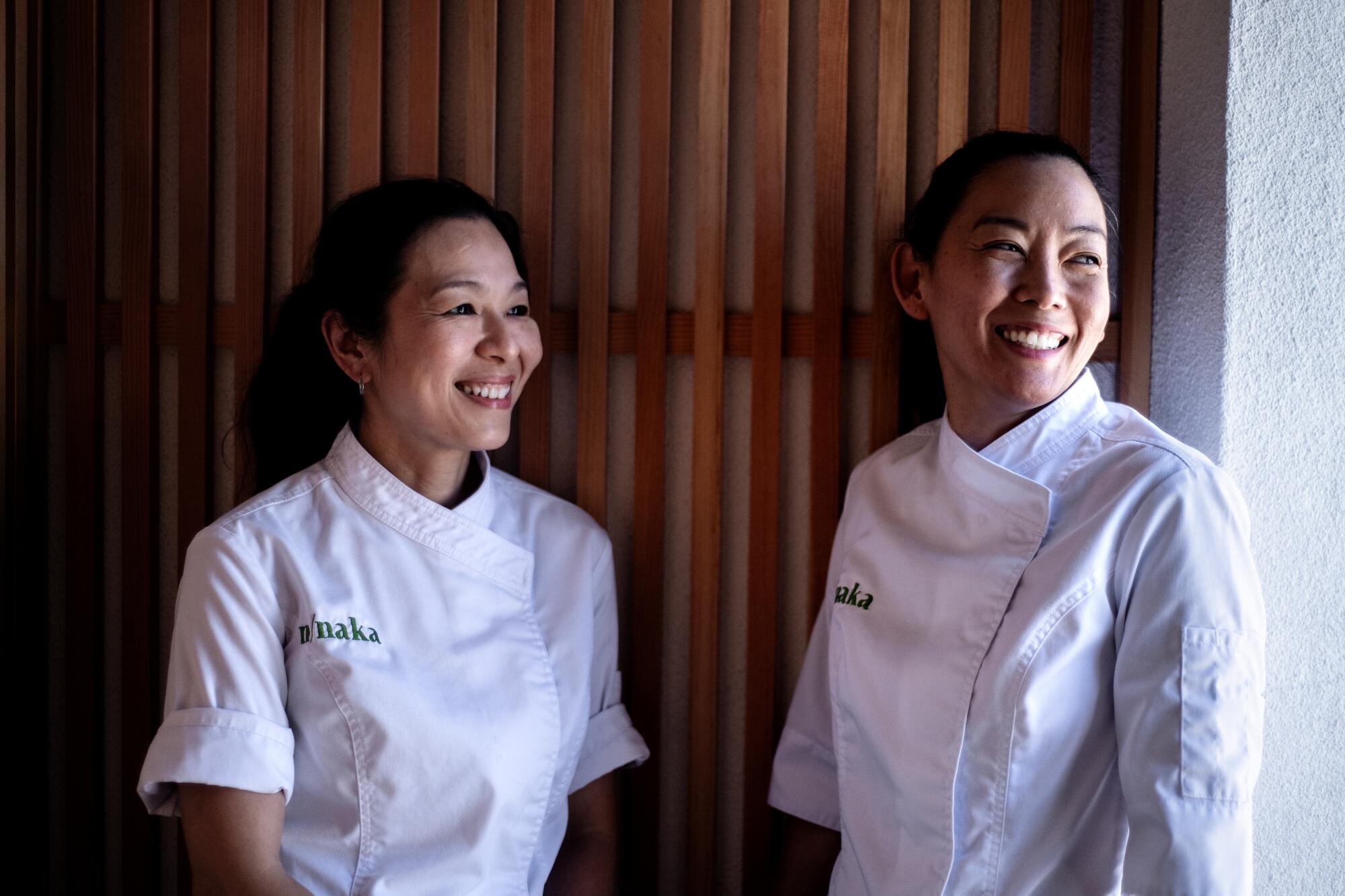
Grated ginger and chopped scallions garnish the tofu. Pouring over tosa joyu, a soy-based sauce enriched with shaved bonito, muddies the pearly landscape but brings vital smoky depth to the dish.
No matter what else you choose from n/soto’s izakaya-inspired menu — cucumber and wakame salad, artfully arranged sashimi, skewers threaded with chicken thigh and scallions or bacon-wrapped tomatoes, maitake tempura or the amazing miso-baked bone marrow paired with onigiri — if you order the tofu, it will arrive first. Servers anticipate its arrival by setting down individual earthen bowls and wooden spoons. The moment of ceremony feels settling.
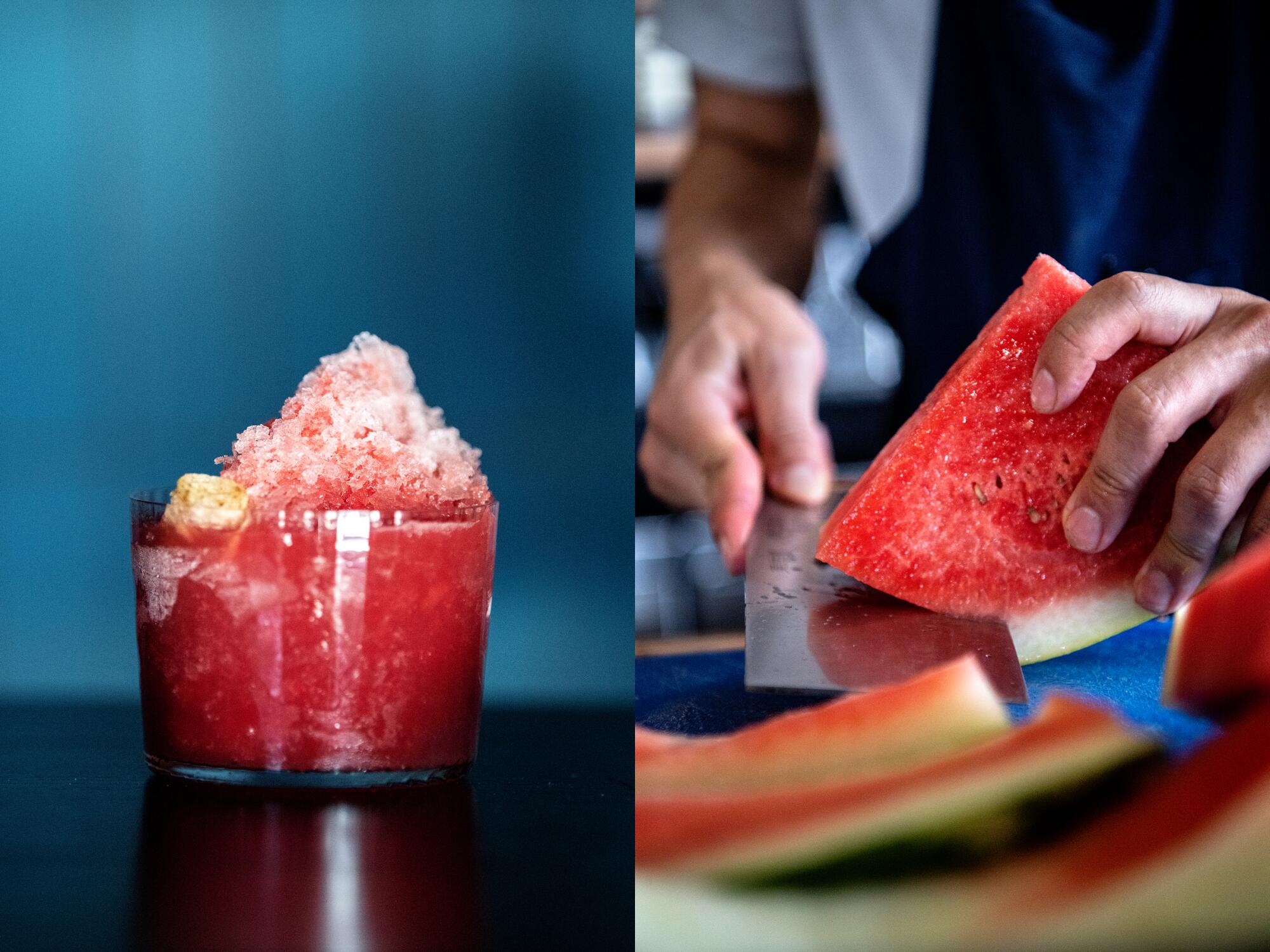
Alongside, I’ll probably be sipping an icy watermelon cocktail that improbably tastes of mulberries; you might prefer a glass of sake with notes of melon, a citrusy IPA from Crown & Hops in Inglewood, or an alcohol-free number that combines strawberries, elderflower and amazake, a fermented rice beverage with a creaminess akin to yogurt.
Niki Nakayama and her wife, Carole Iida-Nakayama, conceived the idea for n/soto when the COVID-19 pandemic forced them to close n/naka, their globally famed 26-seat ode to kaiseki in Palms. The elaborate bento boxes they began selling to stay afloat led to collaborations with other chefs and a pop-up at the Japanese American Cultural & Community Center.
A kaiseki restaurant in unassuming environs, where chef Niki Nakayama prepares exhilarating Japanese tasting menus.
In the midst of it all, they leased a vine-covered building on a corner of West Washington Boulevard in Mid-City that was previously occupied by a Korean seafood restaurant.
The couple knew they’d need to give n/naka their attention at night when indoor dining resumed, so they invited chef Yoji Tajima, whose Beverly Hills sushi restaurant Yojisan closed in 2020, to lead n/soto’s kitchen.
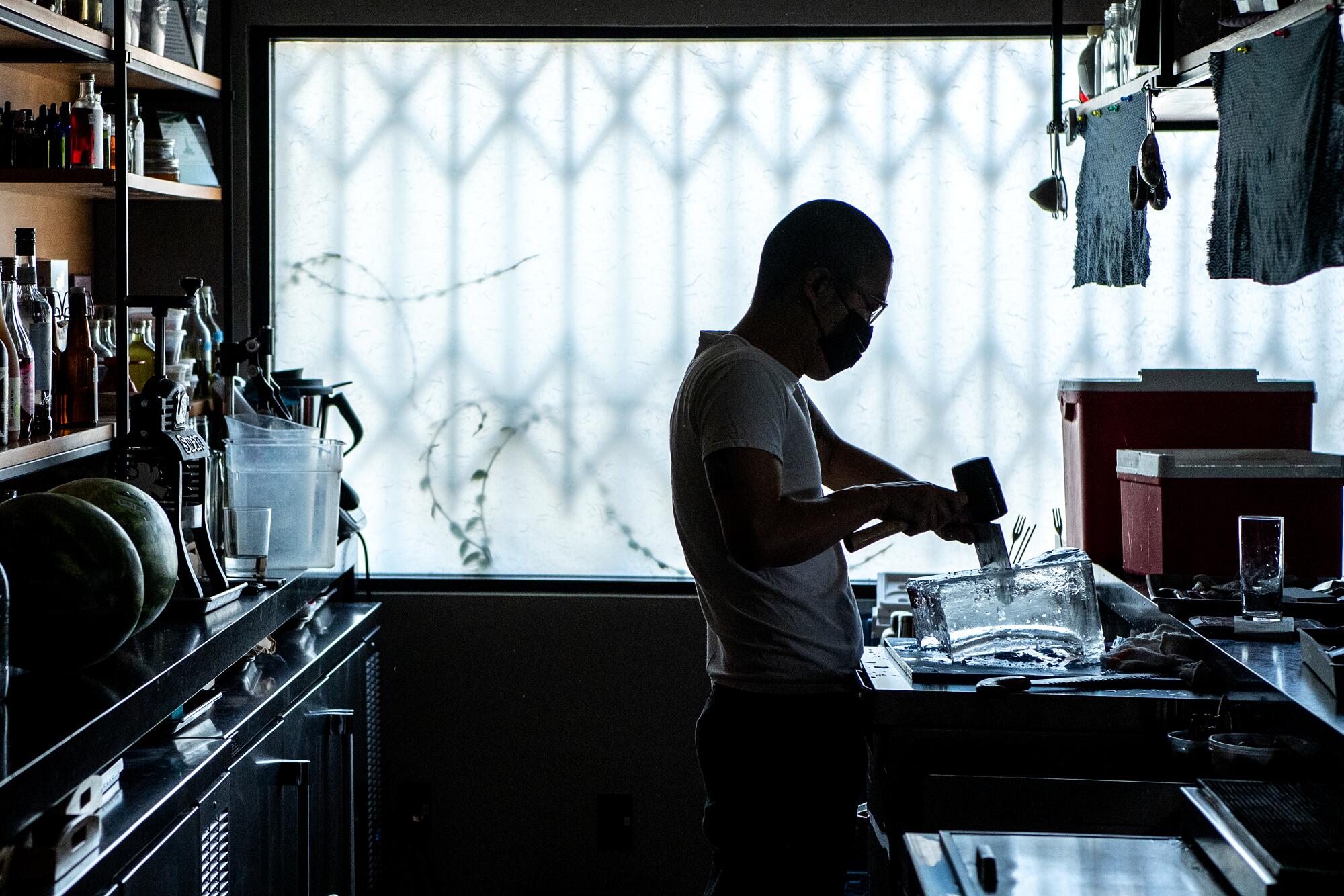
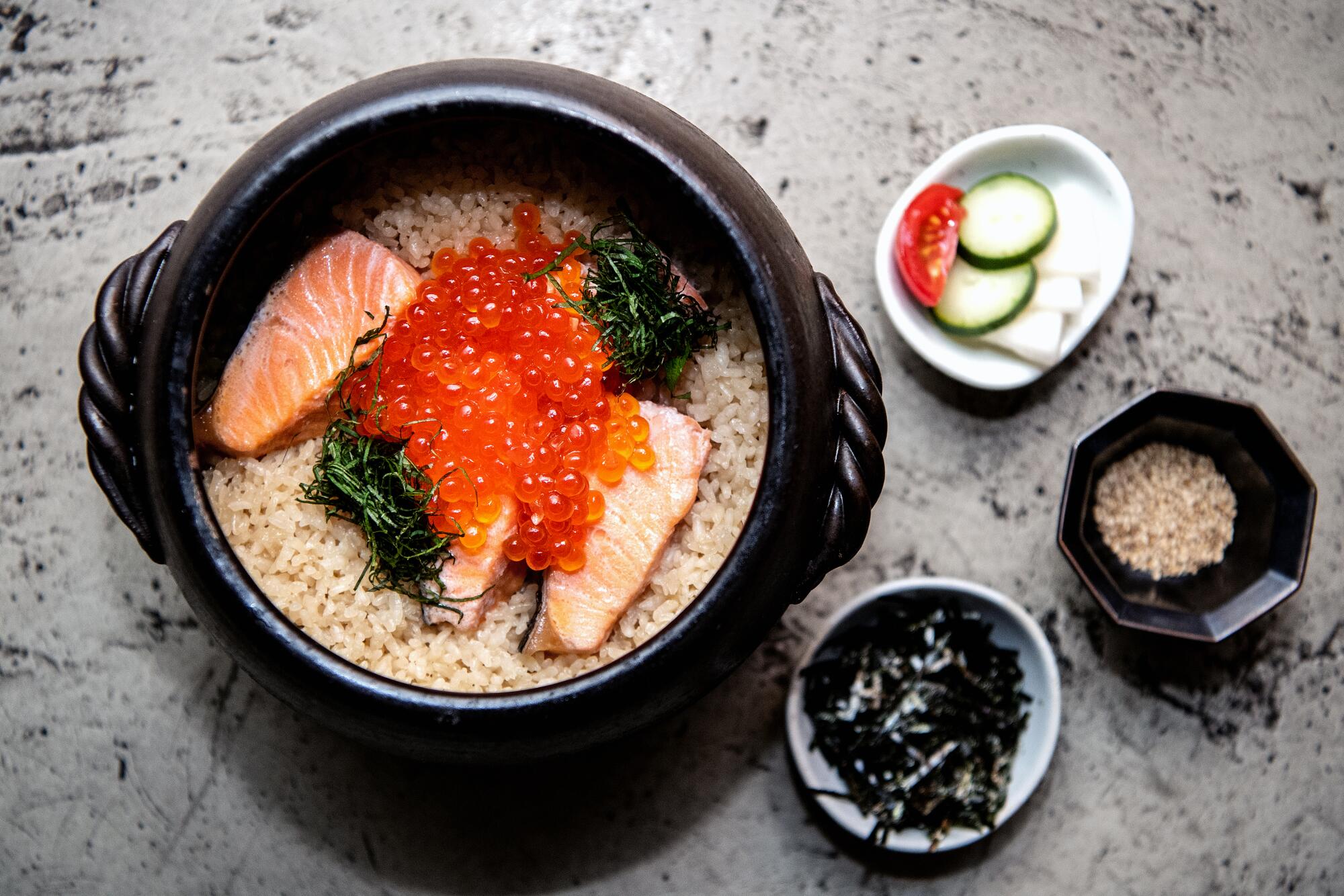
Locally or nationally, fewer restaurants bill themselves these days as izakayas. The word denotes a Japanese eating and drinking establishment that’s often interpreted in English as a “pub” or “tavern” — terms that can belie the finesse of cooking.
Izakayas arguably reached their zenith in Los Angeles 15 years ago. Similar to the British-imported gastropub, they proliferated and then dwindled as our dining culture simply absorbed the style. The notion of a restaurant serving smaller plates that incorporate myriad culinary techniques, matched with a thoughtful beverage program, is a template that plenty of Angelenos now find familiar.
In the same way that Charles Namba and Courtney Kaplan’s wonderful Tsubaki in Echo Park zeroes in on a truer essence of izakaya, with its canon of casual Japanese dishes funneled through the California seasons and some individualist imagination, so does n/soto. Nothing about the refinement on display conveys “bar food” in the normal sense (though, more than ever, what does “normal” even mean?). Meeting n/soto on its own terms can lead to a series of engaging, intricate delights.
Design firm Bells & Whistles softened the small dining room’s concrete walls with handsome white oak slats and calming blue tiles that line the bar. The indoor space is nearly windowless; the lighting vibe is perpetual twilight.
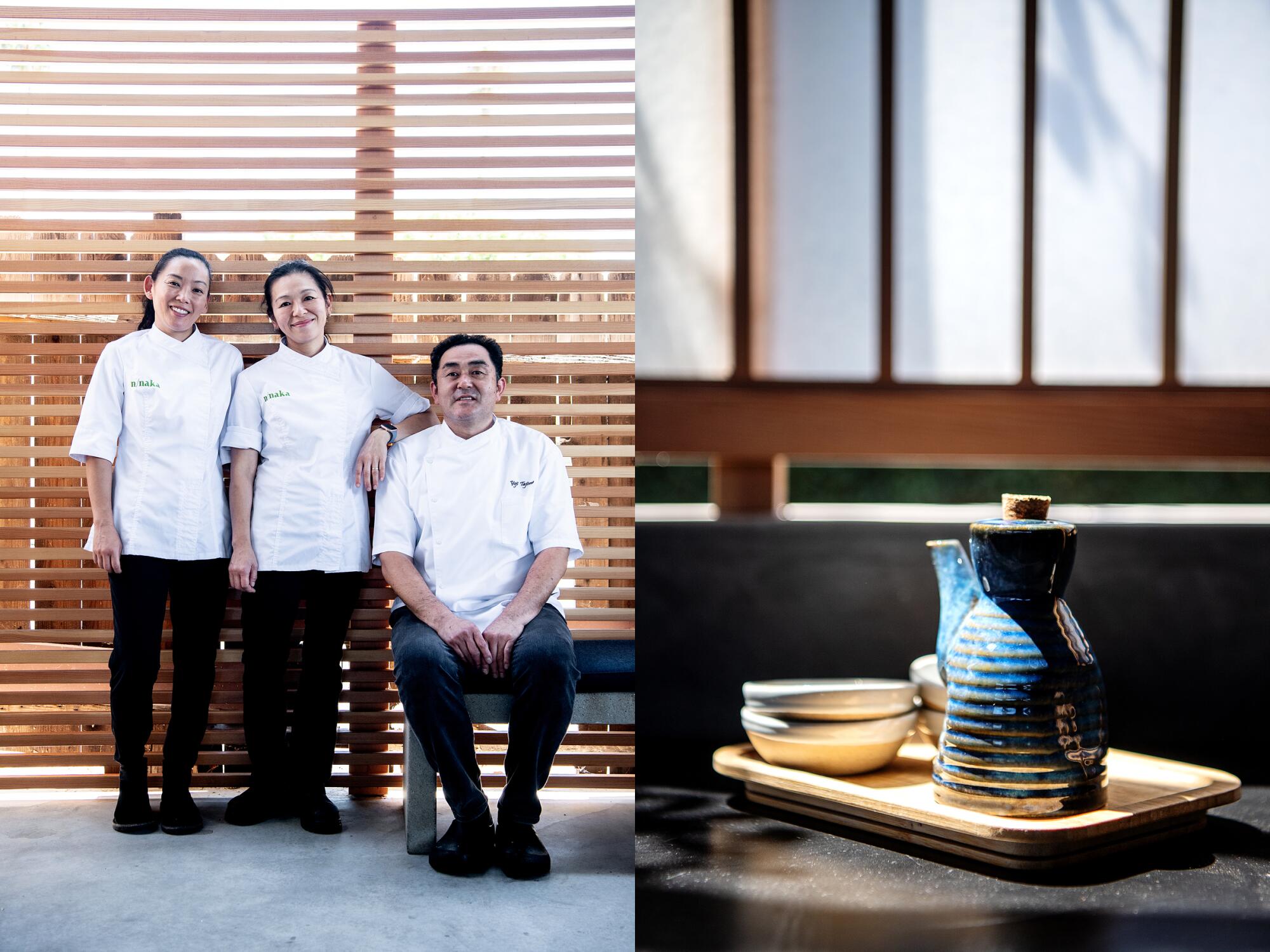
When n/soto opened in April, I heard some initial grumbling that Nakayama and Iida-Nakayama’s second restaurant was nearly as difficult a reservation as their fine-dining flagship. That’s because the tranquil covered patio wasn’t quite ready. It’s still not a last-minute destination, but with indoor and outdoor seating, a table doesn’t require anything close to the combination of calendar reminders and blind luck that booking at n/naka does.
And n/soto’s 50-plus item menu covers a lot of ground.
Two starters I missed at first shouldn’t be overlooked. A tartare of carrots and fennel that have been variously pickled, roasted and chopped fresh comes bound in a carrot cream with an almost vanilla sweetness that soon gives way to acid and earthiness. It takes a minute for all the flavors in a single bite to unfold, and they keep unfurling.
The mochi flatbread, a conceit the chefs perfected during test runs of the restaurant, is chewy and crackly in equal proportions; wedges of it are served with crudité and a dip of crème fraîche and roasted, smoky eggplant that slyly recall Persian kashke bademjan. We are in some serious L.A. territory here.
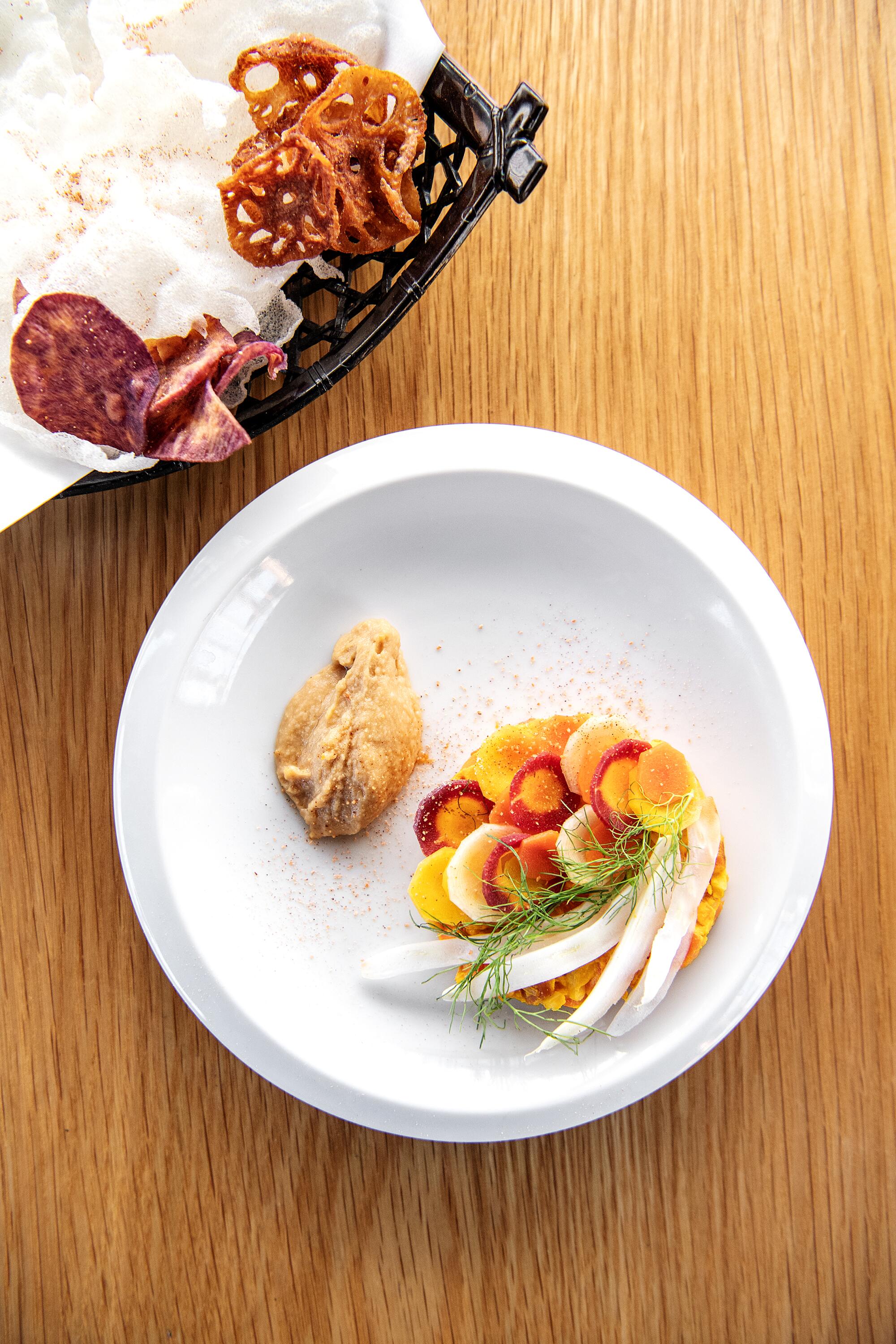
Tajima turns to sculpture for sashimi and other raw or barely cooked seafood. Ripe, thick slices of nectarine and skinned tomatoes huddle together, propping up a fan of golden eye snapper, or sometimes wild halibut, that shows off the kitchen team’s beautiful knife work. A wide lobe of uni drapes over taut slices of abalone painted with ponzu that’s spiked with a little tingly sansho. Circles and stripes of vegetable garnishes may dart into the air.
The selection evolves continually, but the sense of artfulness and subtlety is also constant — occasionally too much so. Tiny florets of pickled cauliflower and pepitas gild a dish of scallop sashimi ; the dressing uses vinegar made with ume, a preserved plum that usually packs a salty wallop. This one is so restrained that the whole composition tastes underseasoned.
Las Vegas’ Chinatown houses nearly 200 restaurants serving the cuisines of China, Japan, Korea, Vietnam, Thailand, Malaysia and the Philippines.
To leap toward bigger flavors, I tend to skip the nigiri and hand rolls at n/soto. The craft behind them is absolutely respectable, and if sushi appeals to you as part of the meal, go for it. But since we live in one of the world’s finest metropolises for sushi, I instead reserve my appetite for some of the restaurant’s exemplary cooked dishes.
Order a mix of kushiyaki and a parade of grilled skewers arrives nicely timed at dinner’s midpoint. Among negima (the rectangular pieces of chicken thighs charred but still juicy, the white-green sections of scallion tender but still retaining crunch), small Japanese sausages and velvety unagi, be sure to throw in the cherry tomatoes that burst against the teeth underneath their wrappers of just-rendered bacon.

The tempura section is particularly strong. One early dazzler pairs cubes of nonbattered mochi with fresh shiso leaves; they’re folded around shrimp and wood-ear mushrooms before they’re fried in a sheath of tempura. They pose in a shallow pool of dashi — if umami has a fragrance, this is it — dusted with grated yuzu to boost the color and taste to the brightness of sunshine.
I’ve come to think of the halved miso-baked bone marrow as the meaty counterpart to the carrot-fennel tartare. It splays across a platter next to one precisely shaped onigiri; the idea is to scoop out the marrow and spread it on the rice ball. Umeboshi lurks among the grains, which diffuses its saltiness and draws out some of its plum sweetness; it toggles back and forth with the marrow, creating a third, mysterious taste. This is not a substantial dish, size-wise, but it’s a pyrotechnic highlight.
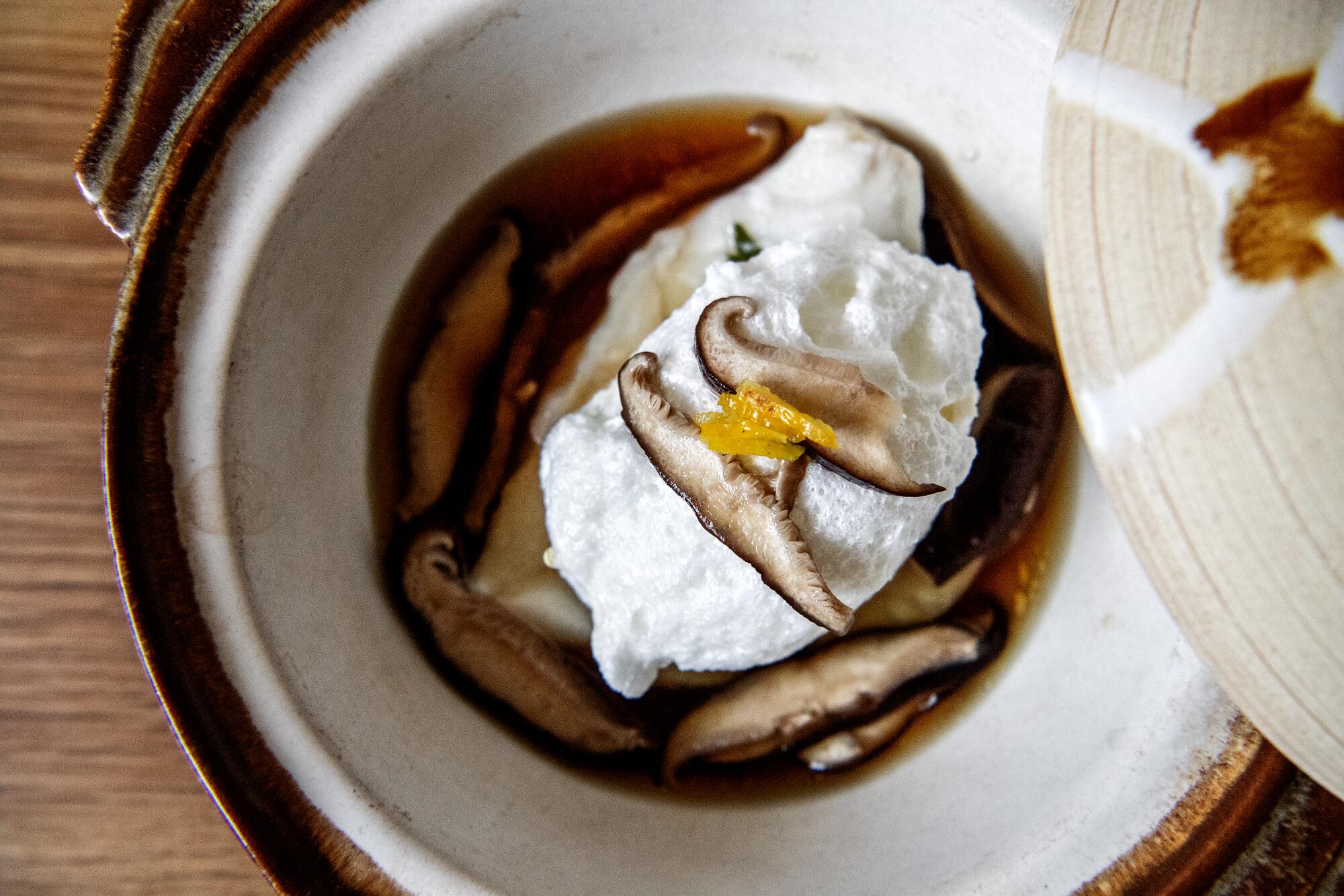
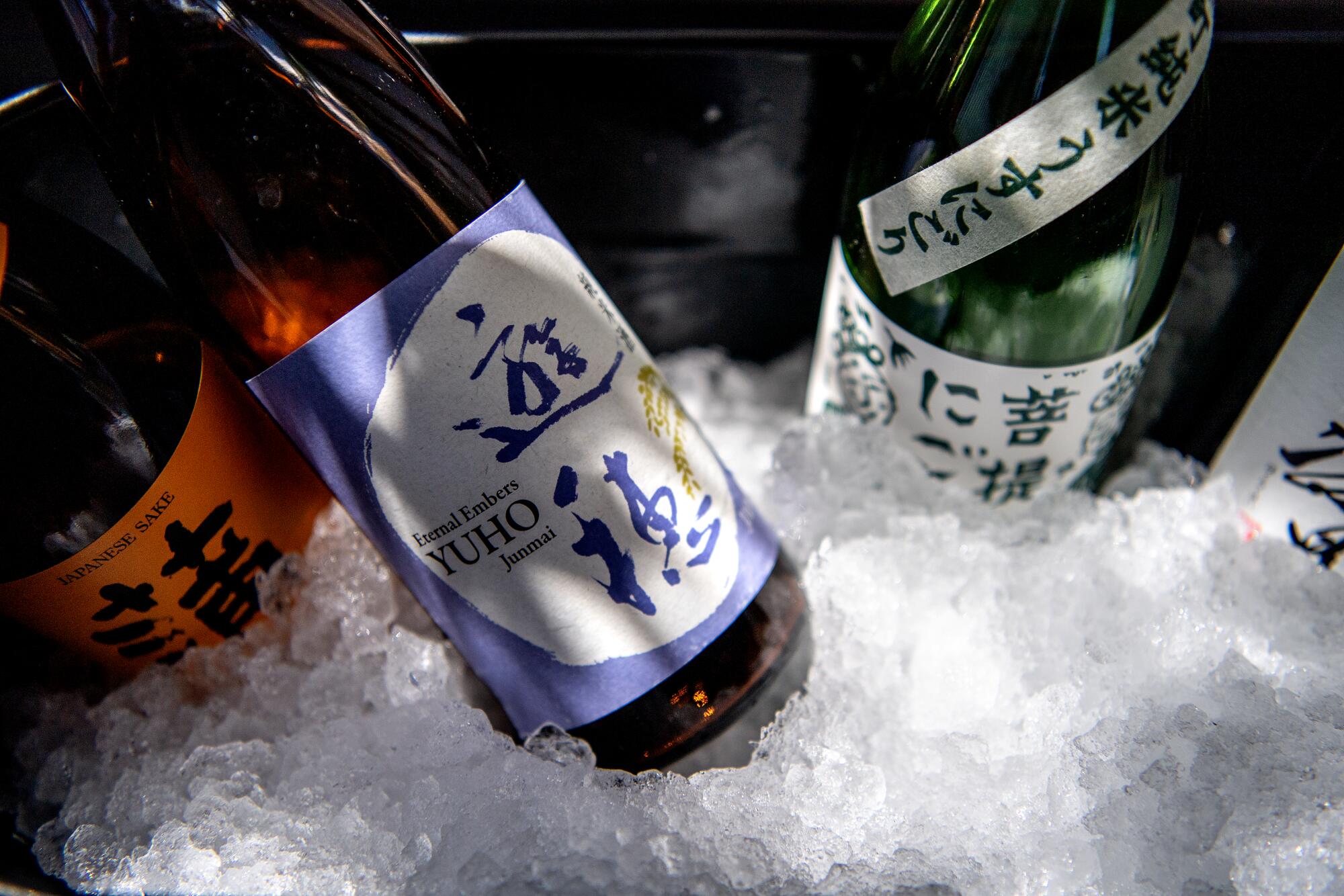
Speaking of rice: It’s how I like to close the evening at n/soto. The handful of desserts are simple; a fun melon float, a flavor or two of Ginger’s ice cream and often a variation on budino. After a round of Jason Lee’s sake or shochu cocktails — laced with ingredients like tamarind and toasted rice or bamboo leaf and pale cream sherry — followed by more elegant sake from a concise list of mostly small producers, I’m still leaning more savory than sweet.
The answer is ochazuke, a bowl of rice rechristened as soup while green tea is poured over. Gentle pickles and, yes, more umeboshi drift on the surface. Some deep inhales, a first aromatic spoonful, a few more and then the meal ends as it began when the oboro tofu landed: with a moment of stillness, like pausing to admire the moon.
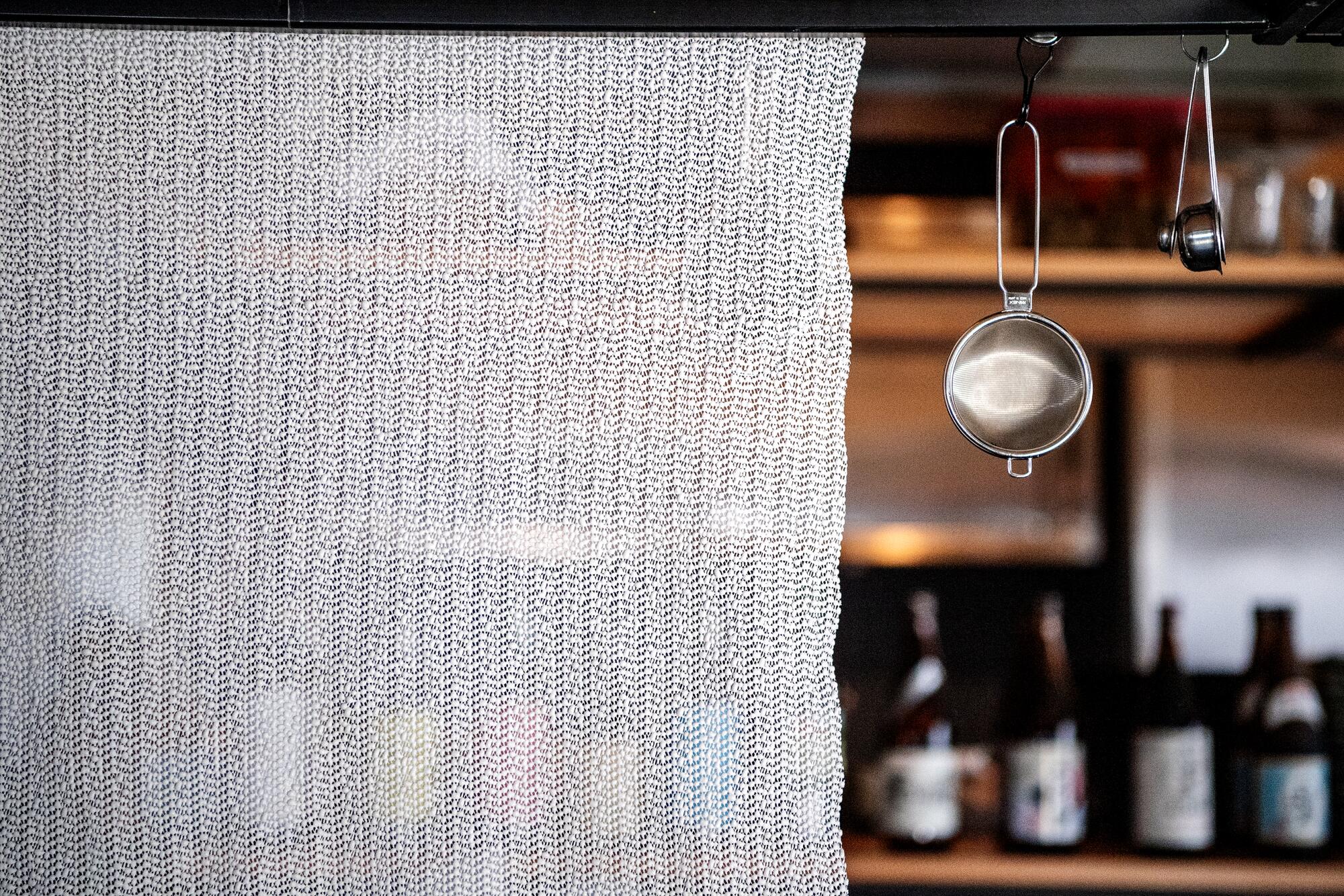
n/soto
4566 W. Washington Blvd., Los Angeles, (323) 879-9455, n-soto.com
Prices: Starters $8-$16; raw and sashimi dishes $10-$28; kushiyaki $3-$7.50; grilled, steamed and fried dishes $8-$36.
Details: Open 5:30 to 10 p.m. Wednesday through Sunday. Beer, wine, sake and cocktails made from sake and shochu. Street and valet parking.
Recommended dishes: Warm house-made tofu, crudité with mochi flatbread, carrot and fennel tartare, negima kushiyaki, agedoshi mochi, miso-baked bone marrow, ochazuke.
